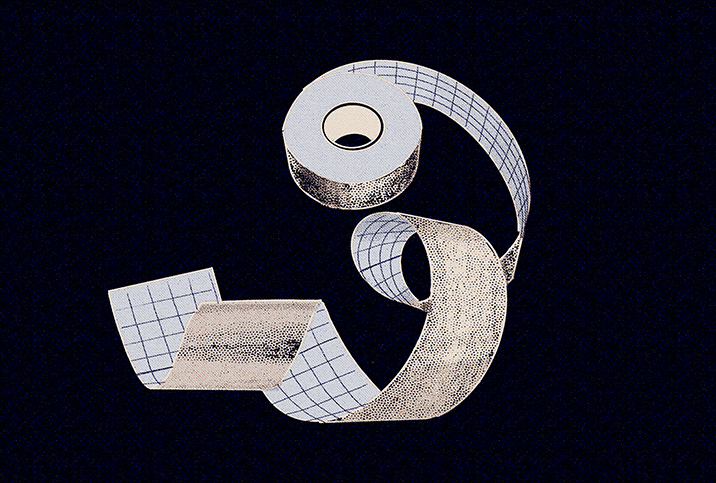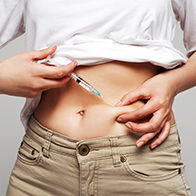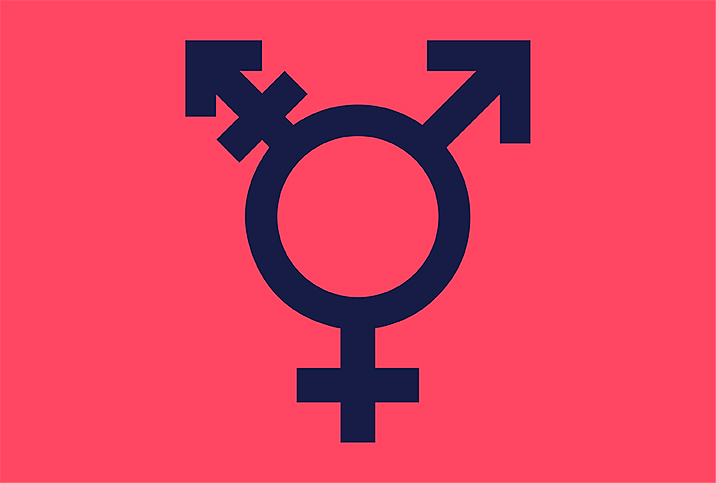Safe Ways to Bind Without a Binder

Binding involves wearing a fitted garment to flatten the chest in an effort to alter your body's look or feel. This noninvasive compression allows individuals to present their gender identity, decrease gender dysphoria, and increase feelings of confidence and self-esteem.
However, it's important to note not all individuals who bind identify as transgender, nonbinary or gender nonconforming.
No matter who you are or why you're doing it, finding the correct binder can prove difficult. Having access to a binder is a privilege, but if you need a binder and cannot afford or safely obtain one, it's essential to find safe and healthy alternative resources to bind.
The safest way to bind without a binder
Garments especially designed for optimal binding tend to be expensive and are rarely available for teens and young adults. According to a study on the health impacts of binding, methods are diverse, with individuals using sports bras or multiple sports bras, layered shirts, and even unsafe uses of elastics and other bandages, duct tape and plastic wrap.
Lori Williamson, a board-certified OB-GYN, recommends sports bras with no cups or padding and compression clothing with a stretchy fabric.
"I suggest a fitted, flattening sports bra, making sure it's not too small," Williamson said. "If you don't have a sports bra available, [try] layering clothing or using sports compression clothing. Ensure breathing is easy once it's on."
Layering clothes can be effective with or without the use of sports bras. Additionally, kinesiology tape is a useful binding tool because of its nonconstrictive use, allowing for full mobility, motion and breathing.
"Binding and dressing in a way that allows someone to stand up with shoulders back and take deep breaths will go a long way for overall physical health and well-being," Williamson said. "The curved shoulders and chest can accentuate body dysmorphia and low self-esteem. Stand the way you want to feel."
What are the health risks of binding unsafely?
Although binding has mental health and safety benefits, binding unsafely can cause negative physical symptoms, including back pain, overheating, chest pain, shortness of breath and scarring.
Other severe health concerns of binding include compressed or broken ribs, a condition that can permanently damage blood vessels and lead to symptoms that include loss of breath, back pain and increased pain when breathing.
When binding, avoid using elastic bandages, duct tape and plastic wrap as an alternative. All of these methods can cause permanent damage to the skin and tissue.
"Significant skin reactions and infections can occur when using tape or anything that doesn't allow the skin to breathe," Williamson stated. "If the bind is too tight and chest movement or posture is limited, the musculoskeletal weakness and total body integration can be affected."
Additionally, wearing tight or too-small compression clothing can have the same effects as elastic bandages and duct tape.
"Make sure binding isn't too tight, limit the amount of time and days you're binding, and try to take breaks during the day to release the binding and take some deep breaths," Karan Tang, GYN surgeon, elaborated. "Depending on the methods you choose, please see a qualified health professional if possible to help achieve the appearance you need with the least amount of risk."
Like binders, individuals shouldn't wear compression garments, tape or any elastic materials for more than eight hours. Other safety tips for binding include removing your binder before sleeping, exercising and showering.
How does binding correctly affect mental health?
Despite the negative physical symptoms, binding has mental and emotional health benefits by solidifying gender expression.
Gender dysphoria can cause psychological distress due to the lack of compatibility between an individual's sex assigned at birth and gender identity. Individuals with chest dysphoria experience additional physical and emotional distress due to unwanted breast development.
Studies indicate the mental health effects of binding are almost universally positive.
"Chest dysphoria can be one of the most debilitating experiences facing trans and/or nonbinary teens who are AFAB [assigned female at birth]," Tang indicated. "Binding can help alleviate or minimize chest dysphoria, and allow people in their teens and 20s to minimize distress associated with the appearance of breasts, but allow time to explore and solidify their gender identity and goals."
Studies indicate the mental health effects of binding are almost universally positive, showcasing decreases in suicidality, anxiety and dysphoria and increased self-esteem, confidence and the ability to go out safely in public. Participants in the study also reported an increase in mood positivity with binding, from 7.5 percent to almost 70 percent.
Free binder resources
For those who don't have access to a binder due to financial or safety reasons, organizations and programs have created binder donations, delivering free gender-affirming items discreetly.
Nonprofit organization Point of Pride works to support trans youth and adults through gender-affirming programs and services. Other organizations and programs that offer help include Genderbands, DCATS, American Trans Resource Hub, FtM Essentials, Safe2Trans, Brother 2 Brother, B4CK and Youth Project.
Before binding, it's important to discuss safe and healthy binding options, appropriate care and risks with your physician. For more resources, visit GLAAD Transgender Resources or Trans Care BC for additional information and guides on binding.




















